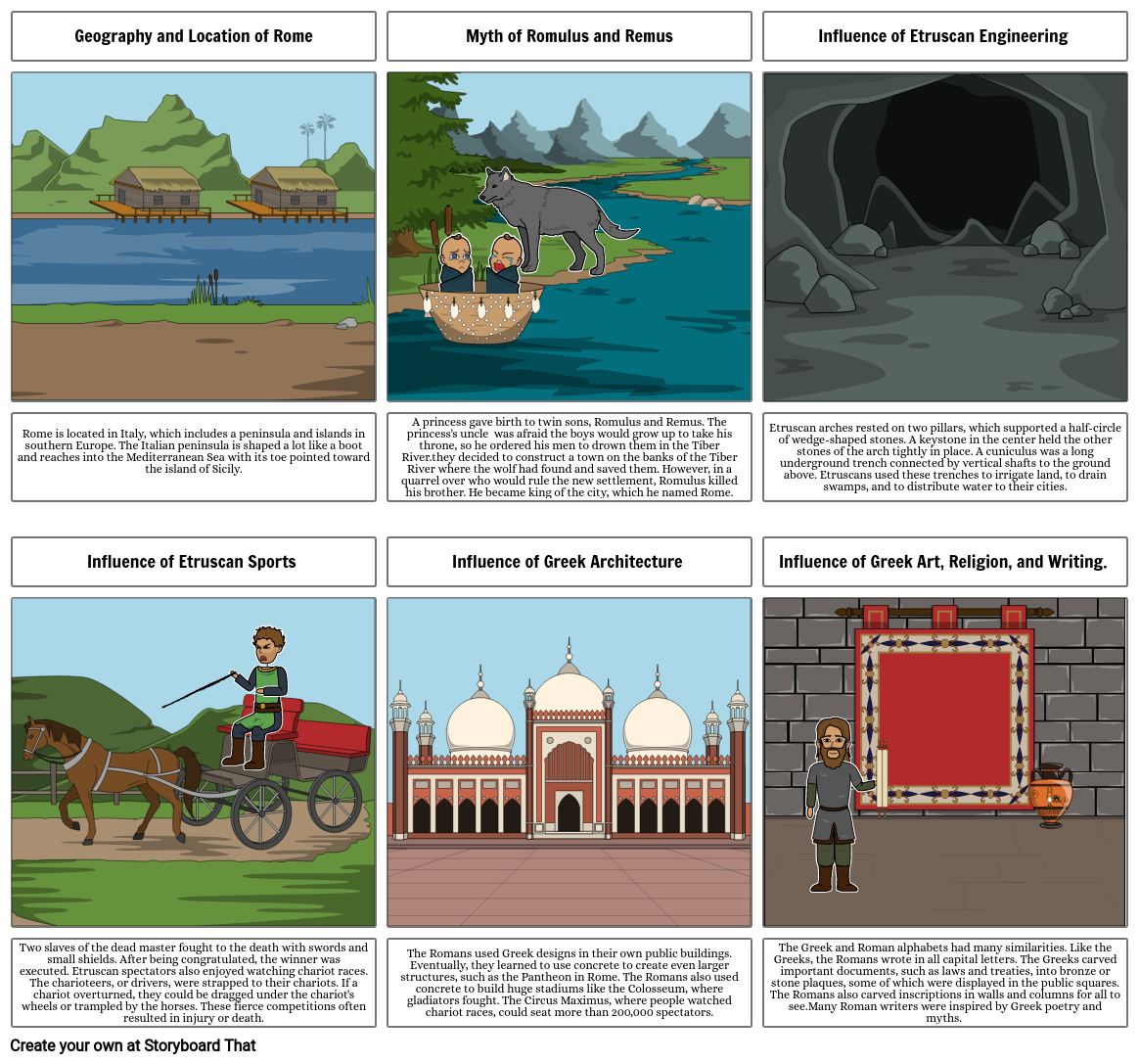Social Studies Project

Storyboard Tekst
- Geography and Location of Rome
- Myth of Romulus and Remus
- Influence of Etruscan Engineering
- Rome is located in Italy, which includes a peninsula and islands in southern Europe. The Italian peninsula is shaped a lot like a boot and reaches into the Mediterranean Sea with its toe pointed toward the island of Sicily.
- Influence of Etruscan Sports
- A princess gave birth to twin sons, Romulus and Remus. The princess's uncle was afraid the boys would grow up to take his throne, so he ordered his men to drown them in the Tiber River.they decided to construct a town on the banks of the Tiber River where the wolf had found and saved them. However, in a quarrel over who would rule the new settlement, Romulus killed his brother. He became king of the city, which he named Rome.
- Influence of Greek Architecture
- Etruscan arches rested on two pillars, which supported a half-circle of wedge-shaped stones. A keystone in the center held the other stones of the arch tightly in place. A cuniculus was a long underground trench connected by vertical shafts to the ground above. Etruscans used these trenches to irrigate land, to drain swamps, and to distribute water to their cities.
- Influence of Greek Art, Religion, and Writing.
- Two slaves of the dead master fought to the death with swords and small shields. After being congratulated, the winner was executed. Etruscan spectators also enjoyed watching chariot races. The charioteers, or drivers, were strapped to their chariots. If a chariot overturned, they could be dragged under the chariot's wheels or trampled by the horses. These fierce competitions often resulted in injury or death.
- The Romans used Greek designs in their own public buildings. Eventually, they learned to use concrete to create even larger structures, such as the Pantheon in Rome. The Romans also used concrete to build huge stadiums like the Colosseum, where gladiators fought. The Circus Maximus, where people watched chariot races, could seat more than 200,000 spectators.
- The Greek and Roman alphabets had many similarities. Like the Greeks, the Romans wrote in all capital letters. The Greeks carved important documents, such as laws and treaties, into bronze or stone plaques, some of which were displayed in the public squares. The Romans also carved inscriptions in walls and columns for all to see.Many Roman writers were inspired by Greek poetry and myths.
Over 30 millioner storyboards opprettet

